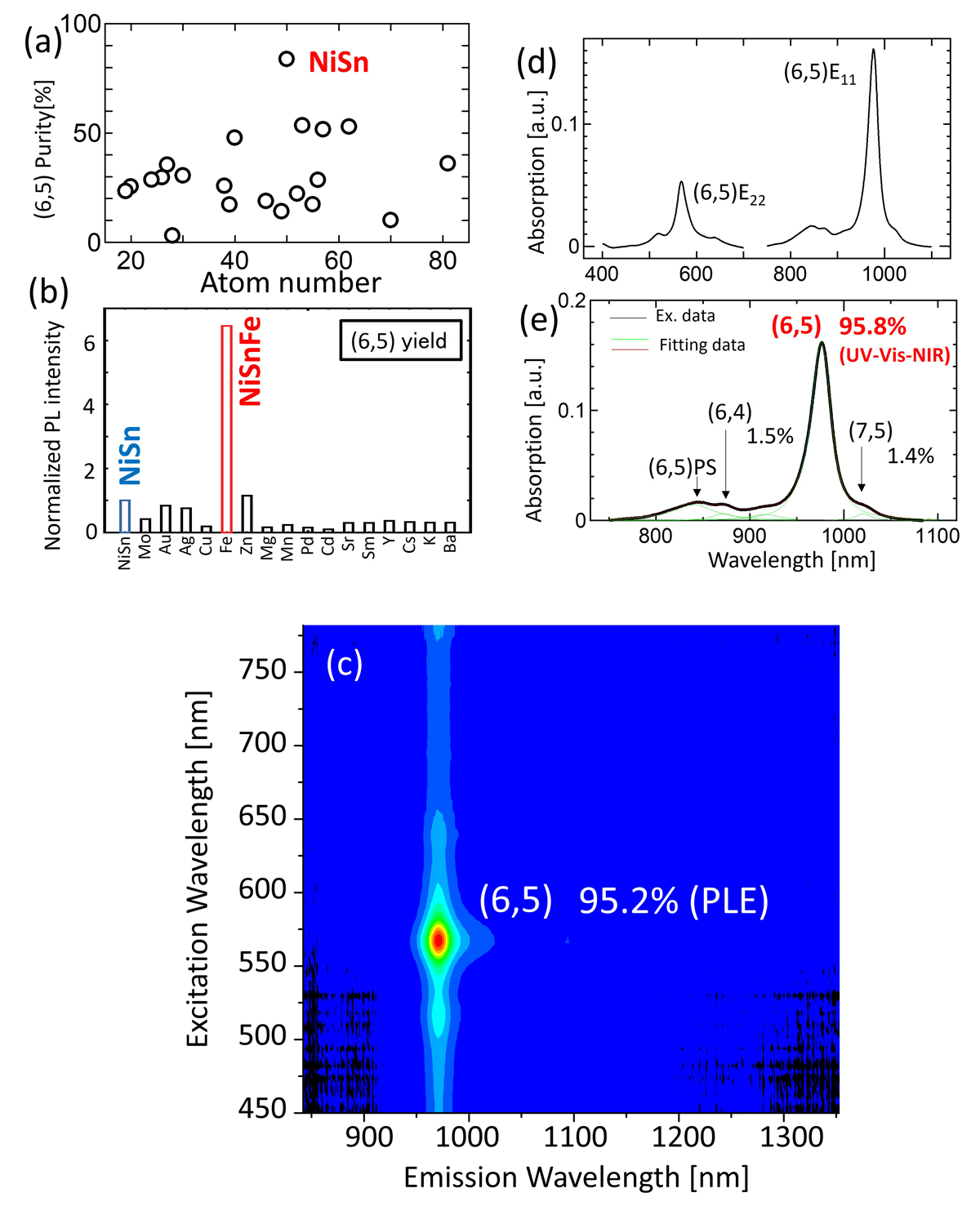Reviewed by Lexie CornerOct 23 2024
A research team from Tohoku University, led by Associate Professor Toshiaki Kato of the Advanced Institute for Materials Research, has successfully synthesized carbon nanotubes (CNTs) with a chiral index of (6,5) and an ultra-high purity exceeding 95 %. These findings were published in the journal ACS Nano.
 (a) Scanning transmission electron microscopy (STEM) image of NiSnFe catalyst and its atomic structure analysis results, and (b) Elemental mapping results for the same particles. Image Credit: Toshiaki Kato
(a) Scanning transmission electron microscopy (STEM) image of NiSnFe catalyst and its atomic structure analysis results, and (b) Elemental mapping results for the same particles. Image Credit: Toshiaki Kato
By developing a unique catalyst that enables precise control over the atomic arrangement, or chirality, of CNTs, scientists have achieved a significant breakthrough in CNT synthesis. This advance addresses a challenge that has remained unresolved for over 30 years and paves the way for novel semiconductor devices.
A carbon nanotube is basically a sheet of carbon rolled into a hollow tube. While it sounds simple, CNTs are highly sought after for properties such as their exceptional conductivity, optical characteristics, and mechanical strength.
Toshiaki Kato, Professor, Tohoku University
CNTs are often dubbed the “king of nanomaterials” due to their exceptional properties, which make them suitable for a wide array of applications, from aerospace to biomedical devices.
The inability to control CNT chirality has been a major barrier to their industrial application, so this project was undertaken to find a catalyst that could consistently produce the desired target.
Toshiaki Kato, Professor, Tohoku University
Until now, only the (14,4) and (12,6) chiralities have been synthesized with a purity exceeding 90 %.
The research team introduced a catalyst composed of nickel (Ni), tin (Sn), and iron (Fe), which allows for the selective synthesis of CNTs with a (6,5) chirality. The highly specialized catalytic activity of this NiSnFe catalyst enabled this breakthrough. Additionally, the photoluminescence lifetime of these chirality-pure (6,5) CNT bundles is more than 20 times longer than that of isolated (6,5) CNTs.
This method could be used in the future to synthesize other specific CNT chiralities. The team hopes these findings will lead to significant advancements in semiconductor device production and applications.
Journal Reference:
Shiina, S., et al. (2024) Synthesis of Ultrahigh-Purity (6,5) Carbon Nanotubes Using a Trimetallic Catalyst. ACS Nano. doi.org/10.1021/acsnano.4c01475.